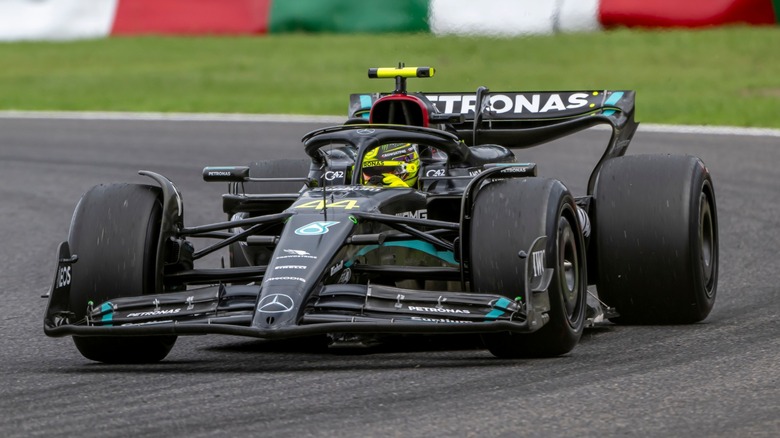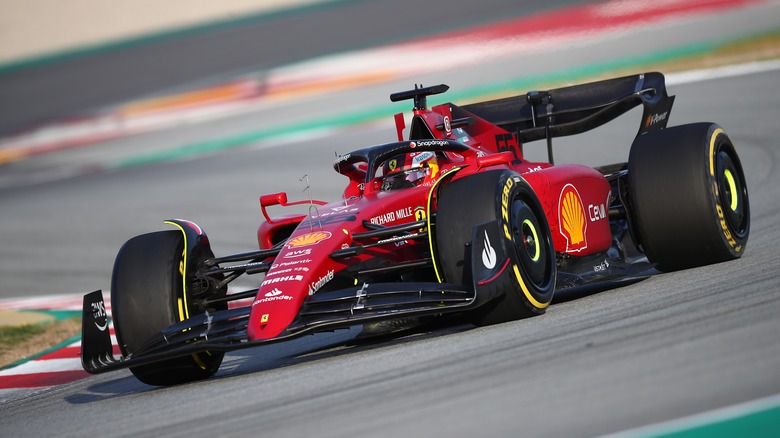What Type Of Engines Do F1 Cars Use And How Much Horsepower Do They Have?
Formula 1 racing has been around since 1950, and while a lot has changed since then — particularly in terms of car performance and race regulations — fast cars going fast has remained a constant. But just how powerful are the engines in today's fastest F1 racers? These four-wheeled wedges do 0 to 60 in under three seconds and can go as fast as 150 to 200 mph. They have to be using some really powerful engines to race at those kinds of speeds, right? Well, yes and no.
The subject of F1 engine power can be a bit murky because the engine alone isn't solely responsible for the car's power and speeds. Aerodynamics and weight are also important factors, which can be greatly impacted by a large, heavy engine. So rather than relying on raw power, F1 cars utilize a combination of parts and systems to squeeze as much as they can out of what they've got.
Current F1 engines
In the interest of fairness and safety, Formula 1 regulations require all cars to use a 1.6 liter, turbocharged V6 engine — manufactured by either Ferrari, Honda, Mercedes, or Renault. The iconic engines that changed racing forever aren't entirely identical between companies, but they (along with turbochargers, exhausts, etc) are expected to fall within certain parameters.
Though it's a bit reductive to say that F1 cars simply use a V6 engine, because there's more to it than that. The engine is more like one part of a larger "power unit," which is also made up of a motor generator unit for kinetics and one for heat (MGU-K and MGU-H), an energy store (basically a battery), exhaust, control electronics, and a turbocharger.
As Motor Authority notes, all of these power unit components working together — the MGU-H collecting energy from the turbo's exhaust, the MGU-K storing some of the energy used in braking, and engines revving up to 15,000 rpm — is what provides F1 cars with up to 1,000 horsepower (roughly five times what you'll find in an average consumer vehicle). Though the engines themselves are also designed for better thermal efficiency compared to standard automobiles, with elements like a second, smaller combustion chamber sitting above the main chamber to improve the air-fuel mix. So it's not so much that F1 engines are absurdly powerful but that they're exceptionally efficient and can produce a lot of power more economically.
F1 engines in 2026
Due to an agreed-upon change in regulations and development back in 2022, the current crop of F1 engines are expected to be ditched in favor of new systems in 2026. These new power units, as Formula 1 notes, will use fuels that don't contain any fossil carbon — something that is expected to become available commercially at some point in the future.
The new power units will also use a much more powerful version of the kinetic motor generator unit (MGU-K), which can allegedly produce close to three times the power compared to current models. With a stated goal of pushing today's 120kW up to 350kW.
All of this would, according to F1, make the new power units even more economical than what's being used today. They're still expected to maintain that current level of around 1,000 horsepower, but they'll be doing it with less (and cleaner) fuel. The example Formula 1 provides is an average of around 160 kg of fuel per vehicle in the Grand Prix in 2013, 100 kg in 2020, and a goal of 70 kg in 2026.


